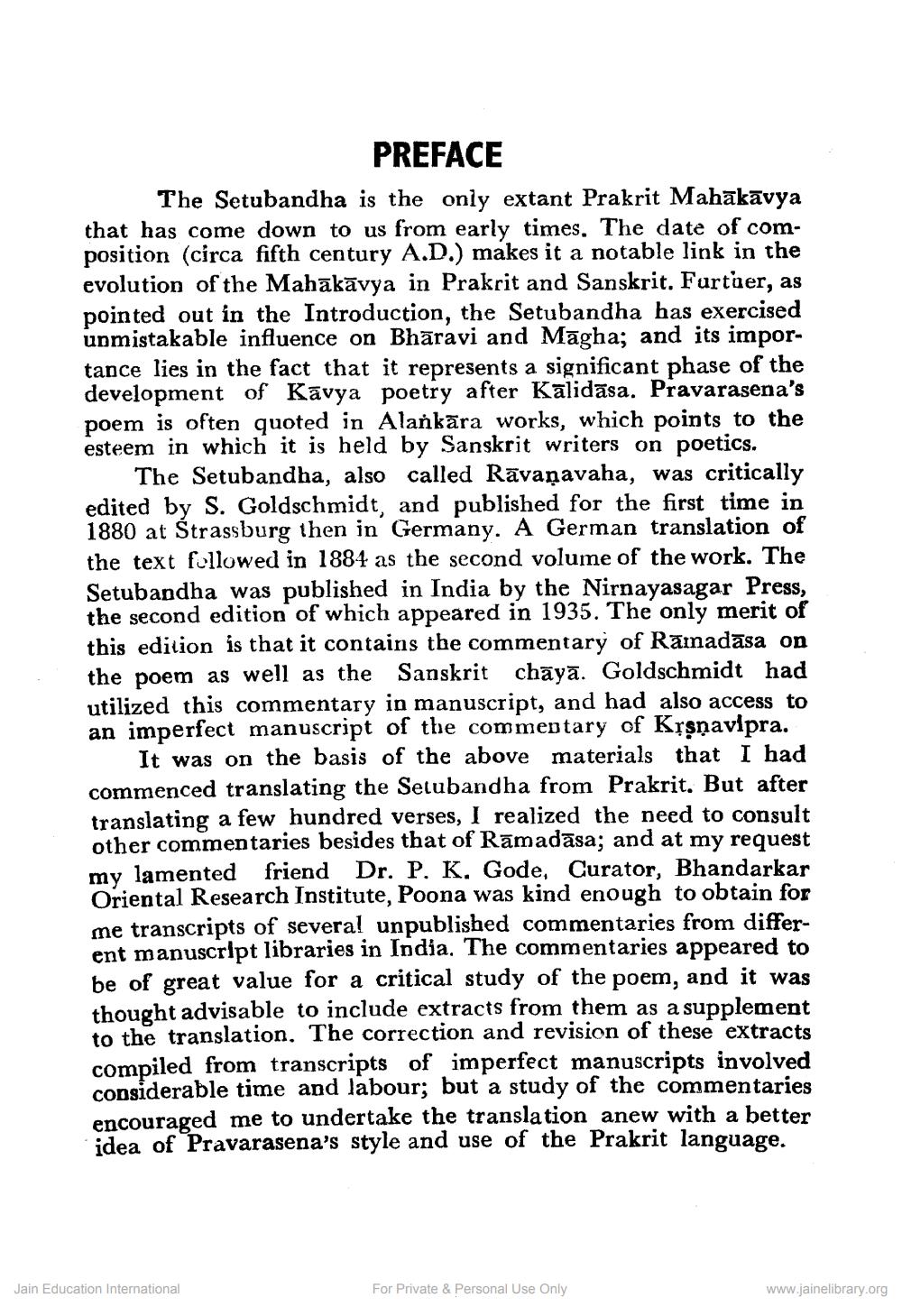________________
PREFACE
The Setubandha is the only extant Prakrit Mahākāvya that has come down to us from early times. The date of composition (circa fifth century A.D.) makes it a notable link in the evolution of the Mahakavya in Prakrit and Sanskrit. Further, as pointed out in the Introduction, the Setubandha has exercised unmistakable influence on Bharavi and Magha; and its importance lies in the fact that it represents a significant phase of the development of Kavya poetry after Kalidasa. Pravarasena's poem is often quoted in Alankara works, which points to the esteem in which it is held by Sanskrit writers on poetics. The Setubandha, also called Ravaṇavaha, was critically edited by S. Goldschmidt, and published for the first time in 1880 at Strassburg then in Germany. A German translation of the text followed in 1884 as the second volume of the work. The Setubandha was published in India by the Nirnayasagar Press, the second edition of which appeared in 1935. The only merit of this edition is that it contains the commentary of Ramadāsa on the poem as well as the Sanskrit chaya. Goldschmidt had utilized this commentary in manuscript, and had also access to an imperfect manuscript of the commentary of Kṛṣṇavipra.
It was on the basis of the above materials that I had commenced translating the Setubandha from Prakrit. But after translating a few hundred verses, I realized the need to consult other commentaries besides that of Ramadasa; and at my request friend my lamented Dr. P. K. Gode, Curator, Bhandarkar Oriental Research Institute, Poona was kind enough to obtain for me transcripts of several unpublished commentaries from different manuscript libraries in India. The commentaries appeared to be of great value for a critical study of the poem, and it was thought advisable to include extracts from them as a supplement to the translation. The correction and revision of these extracts compiled from transcripts of imperfect manuscripts involved considerable time and labour; but a study of the commentaries encouraged me to undertake the translation anew with a better idea of Pravarasena's style and use of the Prakrit language.
Jain Education International
For Private & Personal Use Only
www.jainelibrary.org




